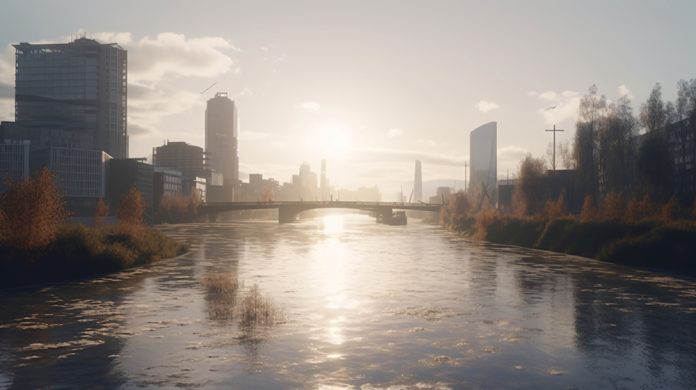Our rivers and canals are bearing the brunt of pollution and blockages caused by storm debris. With the accelerating rate of climate change, these problems look set to become increasingly common. Mark Fowles, of wastewater management company, William Gilder Group, outlines the wider role of canal dredging in the ever-evolving discussions surrounding climate action.
Dredging – the removal of such debris along with silt and other materials built over time – is an important activity for maintaining the health of a waterway. In previous years, the process has had its environmental critics, but carried out carefully, it can steer a course towards healthier water networks.
There is no escaping the fact that our water systems need help. While there are some encouraging signs that the issue is being addressed through policy changes and monetary investment towards critical infrastructure improvements, there is a long way to go. And the right outcomes will only be achieved through continued education and collaboration from all stakeholders.
Dredged material from canals and other waterways can be reused in the restoration of riverbanks and local habitats, crucial for meeting biodiversity objectives and requirements without the need to bring in materials from further afield and therefore, resulting in increased emissions. The same process can also be used at natural wetlands such as marshes and swamps, 35% of which have been lost since the 1970s and yet are a vital source of freshwater. The recycled material can be deposited to enhance or restore these lost areas or, alternatively, protect from rising sea levels. It sounds straightforward, but recycled material still needs to have specific characteristics and treated carefully to make it suitable for these uses.
Nevertheless, when completed properly and to the necessary standard, the use of dredged material should not be dismissed. The dewatering treatment process also has cost-saving benefits, as the weight of the removed materials is lessened and therefore, so is the need for additional transport requirements.
The UK consists of some 2 000 miles of inland waterways, including canals that have fallen into disrepair for one reason or another. Aside from the obvious visual issues, poorly maintained canals impact on wildlife and pose safety hazards to the 750 million visitors to canals and 35 000 boat licence holders in the UK. Amidst the Covid-19 pandemic, waterways also provided what the Canal & River Trust described as a “lifeline” for people to get out and about during the various lockdowns, illustrating the further reaching benefits to communities during times of uncertainty. It is clear that canals – and waterways as a whole – are essential to our way of life, a trend that will doubtless continue as we make sense of the ‘new normal’.
But in order for that to happen, these arterial routes must be kept healthy. In its 2020/21 report, The Canal & River Trust references its tireless efforts in dredging nearly 50km of canals, resulting in the clearance of around 80,000m3 of material. An outstanding achievement, certainly, but there are other stakeholder groups that need to play a role in supporting these efforts and maintaining accessibility of our canal network and communication between all sides is paramount.
At the Gloucester Docks close to us at William Gilder Group for instance, dredging work has been ongoing since November, removing excess silt from the River Severn following the exceptionally dry summer of last year. The higher-than-normal level of silt has reduced the water depth, making it difficult for boats to moor at the Docks and business owners argue this affected trade during the Easter bank holiday in particular.
While the situation is being resolved, with drought risks increasing with rising temperatures, it is a lesson in the need to keep the links of communication between waterway managers and the communities that depend on canals being in the best possible condition. Active management and planning will both be pivotal as the summer draws closer.
We recently worked with a nationwide land and water environmental management expert to support the maintenance of the network of waterways across England, with dredged material being transported to our wastewater treatment facility off the M5 motorway, where it is then treated and made safe for use in other sectors, such as agriculture.
Whether it is an inland waterway or conserving the health of the natural environment outside our towns and cities, this year will need to be one where we turn a corner and work towards a legacy of healthy, clear waterways, for our next generation.



